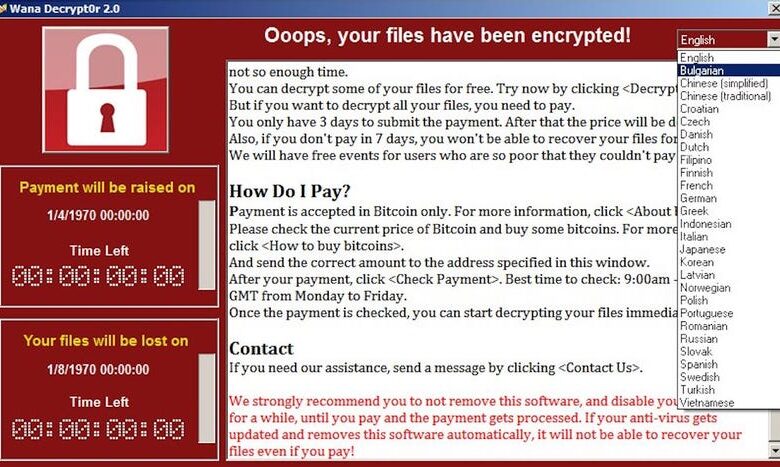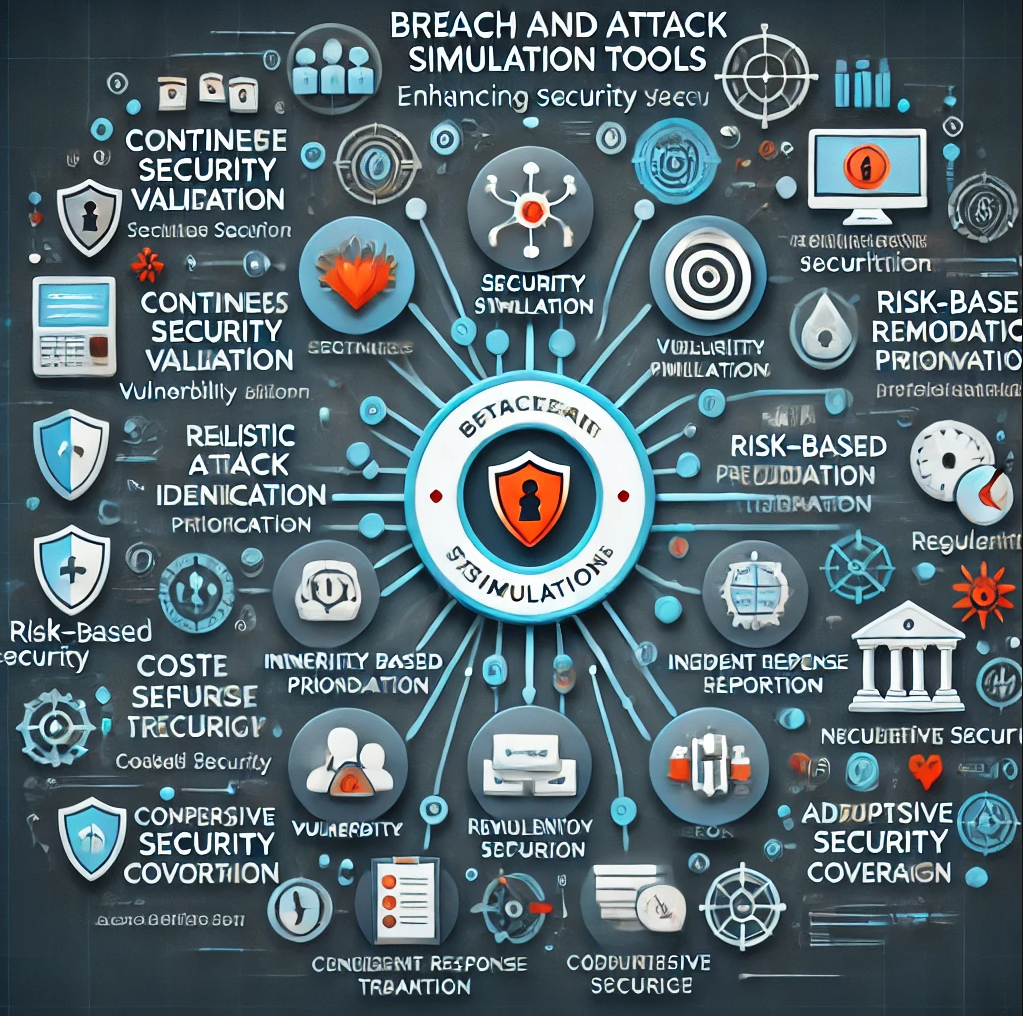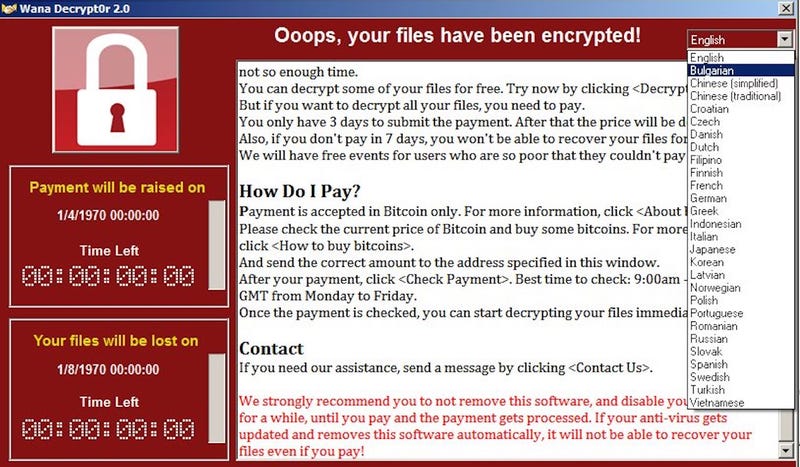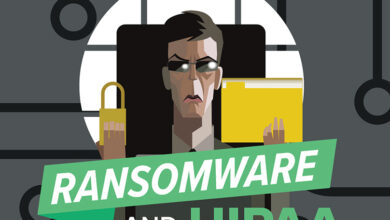
Ransomware Attack on Weir Group A Deep Dive
Ransomware attack on Weir Group – the headline alone sends shivers down the spine of any cybersecurity professional. This industrial giant, a key player in the global mining and engineering sectors, found itself facing a crippling attack that disrupted operations and raised serious questions about its cybersecurity defenses. We’ll delve into the details of this incident, exploring the timeline of events, the impact on Weir Group’s business, and the crucial lessons learned from this harrowing experience.
Get ready for a detailed look at the attack, its aftermath, and the future implications for cybersecurity in the industrial sector.
This blog post will unravel the intricacies of the ransomware attack on Weir Group, examining everything from the initial infection vector to the long-term consequences. We’ll analyze the technical aspects of the attack, the financial repercussions, and Weir Group’s response strategy. We’ll also discuss the legal and regulatory ramifications and explore the broader implications for other organizations facing similar threats.
The goal is to provide a comprehensive overview, offering insights and recommendations for improved cybersecurity practices.
Overview of the Weir Group and its Cybersecurity Posture
The Weir Group, a global engineering and manufacturing company specializing in flow control, pumps, and other industrial equipment, relies heavily on digital infrastructure to manage its complex global operations. This includes everything from design and manufacturing processes to supply chain management and customer service. A robust cybersecurity posture is therefore critical to its continued success and operational stability.
However, like many large multinational corporations, Weir faces inherent challenges in maintaining comprehensive security across its vast and diverse IT landscape.Weir’s business model, involving intricate supply chains, diverse manufacturing facilities, and a global customer base, creates a large attack surface. Their reliance on interconnected systems, including industrial control systems (ICS) often found in manufacturing plants, presents a significant vulnerability.
Publicly available information suggests that Weir, like many companies in its sector, invests in cybersecurity, but the specific details of its security measures are not publicly disclosed for competitive and security reasons. This lack of transparency makes a thorough independent assessment challenging.
Potential Vulnerabilities in Weir Group’s IT Systems
The potential vulnerabilities in Weir’s IT systems are numerous and interconnected. Given their reliance on older legacy systems alongside more modern technologies, a mismatch in security protocols and patching practices could create significant weaknesses. The integration of ICS into their operational technology (OT) environment poses a considerable risk, as these systems are often less secure than their IT counterparts and could serve as an entry point for attackers.
Furthermore, the sheer scale of their global operations, with numerous employees and contractors accessing the network, increases the risk of human error and social engineering attacks like phishing campaigns. Supply chain vulnerabilities also represent a significant concern; compromised third-party vendors could provide attackers with a backdoor into Weir’s systems. Finally, a lack of sufficient endpoint security across all devices, including those used by employees and contractors, increases the likelihood of malware infection.
Potential Impact of a Ransomware Attack on Weir Group’s Operations and Reputation
A successful ransomware attack on Weir Group could have devastating consequences. Disruption to manufacturing processes could lead to significant production delays and lost revenue. The impact on supply chains would be considerable, potentially affecting the delivery of crucial components to customers. Data breaches, resulting in the loss of sensitive customer information or intellectual property, could severely damage Weir’s reputation and lead to legal repercussions and financial penalties.
The cost of remediation, including data recovery, system restoration, and potential legal fees, could run into millions of dollars. Beyond the immediate financial impact, a ransomware attack could significantly erode customer trust and negatively impact Weir’s ability to attract future business. The reputational damage could be long-lasting, affecting investor confidence and overall market value. Furthermore, a disruption to critical infrastructure systems could pose safety risks to employees and potentially the wider public, depending on the specific systems affected.
Examples from other industries, such as the Colonial Pipeline ransomware attack, illustrate the potential for wide-ranging and severe consequences from such events.
Details of the Ransomware Attack

The ransomware attack on Weir Group, while not publicly disclosed in full detail, represents a significant cybersecurity incident impacting a major industrial company. Understanding the specifics of the attack is crucial for learning from the event and improving overall cybersecurity practices across the industry. While precise details remain confidential, we can piece together a likely scenario based on publicly available information and typical ransomware attack patterns.The timeline of the attack is likely to have unfolded over several stages, starting with initial compromise and culminating in data encryption and the ransom demand.
The exact dates remain undisclosed, but the impact was significant enough to warrant a substantial response from Weir Group.
Ransomware Variant and Encryption Methods
The specific ransomware variant used in the attack against Weir Group hasn’t been publicly identified. However, given the sophistication often required to successfully breach and encrypt the systems of a large industrial organization, it’s highly probable that a relatively advanced and well-known variant was employed. These typically use robust encryption algorithms, such as AES-256 or RSA, making decryption without the decryption key extremely difficult, if not impossible.
The attackers likely employed techniques to ensure widespread encryption across various systems and data types, maximizing their leverage in demanding a ransom. The ransom demand itself would likely have been substantial, considering the potential financial and operational impact on a company of Weir Group’s size and complexity.
Attacker Infiltration Methods
Gaining access to Weir Group’s systems likely involved a multi-stage process. The attackers may have used a combination of techniques, including phishing emails targeting employees, exploiting known vulnerabilities in software or hardware, or leveraging compromised third-party vendors or supply chain weaknesses. Initial access could have been achieved through a relatively simple method, such as a seemingly innocuous email attachment containing malware.
Once inside the network, the attackers would have likely moved laterally, gaining access to increasingly sensitive systems and data before deploying the ransomware. The use of sophisticated tools and techniques, such as lateral movement tools and privilege escalation methods, would have been employed to maximize their access and impact. The attackers likely spent a considerable amount of time within Weir Group’s network before initiating the encryption phase to avoid detection and allow for maximum data exfiltration and encryption.
Impact of the Attack on Weir Group’s Operations

The ransomware attack on Weir Group had a significant and multifaceted impact, disrupting various aspects of its operations and causing substantial financial losses. The extent of the disruption depended on the specific systems affected and the speed of the company’s response and recovery efforts. The incident highlighted the vulnerability of even large, established companies to sophisticated cyberattacks and the critical need for robust cybersecurity measures.The attack caused widespread disruption across Weir Group’s operations.
Production lines were halted in several facilities due to compromised systems controlling manufacturing processes. Supply chain management was severely hampered as the attack affected inventory tracking, order processing, and communication with suppliers. This led to delays in project delivery and potential loss of contracts. Customer service was also severely impacted, with delays in responding to inquiries and providing support.
The inability to access critical customer data and communication systems caused frustration and potential damage to the company’s reputation.
Production Disruption
The ransomware attack directly affected Weir Group’s production capabilities. Specific details on the affected facilities and production lines remain undisclosed, however, reports suggest significant downtime across various manufacturing plants. The impact included the halting of production lines, resulting in lost output and unmet customer orders. The recovery process involved restoring compromised systems, revalidating data, and conducting thorough security audits before resuming normal operations.
This downtime incurred significant costs related to lost production, potential contract penalties, and expedited repairs. For example, a similar attack on a manufacturing company in the automotive sector resulted in an estimated $10 million loss in production within the first week alone.
Supply Chain Disruption
The attack’s impact on Weir Group’s supply chain was substantial. Compromised systems responsible for inventory management, order processing, and communication with suppliers led to delays in procurement and delivery. The inability to accurately track inventory resulted in production delays and potential shortages of critical components. Communication disruptions hindered effective collaboration with suppliers, further exacerbating the supply chain issues.
This disruption caused delays in project completion and increased costs associated with expedited shipping and alternative sourcing. We can extrapolate from the experiences of other industrial companies that similar supply chain disruptions can cost millions in lost revenue and additional procurement expenses.
Financial Consequences
The financial consequences of the ransomware attack on Weir Group are likely substantial. While the exact amount of the ransom payment (if any) remains undisclosed, the operational losses due to production downtime, supply chain disruptions, and remediation efforts are likely significant. The costs associated with restoring systems, engaging cybersecurity experts, and conducting forensic investigations add to the overall financial burden.
The long-term impact on the company’s reputation and customer relationships could also lead to future financial losses. The potential legal and regulatory implications, such as fines for data breaches, further contribute to the overall financial impact.
Summary of Key Impacts
| Impact Area | Description of Impact | Estimated Financial Loss | Timeline of Resolution |
|---|---|---|---|
| Production | Halted production lines in multiple facilities; lost output and unmet customer orders. | Undisclosed, but potentially millions in lost revenue and production costs. | Undisclosed, but likely weeks or months. |
| Supply Chain | Delays in procurement and delivery; inability to track inventory; communication disruptions with suppliers. | Undisclosed, but significant costs associated with expedited shipping, alternative sourcing, and potential contract penalties. | Undisclosed, but likely months for full recovery. |
| Customer Service | Delays in responding to inquiries and providing support; damage to reputation. | Undisclosed, but potential loss of future contracts and reputational damage. | Ongoing; recovery depends on restoring communication systems and regaining customer trust. |
| Financial | Ransom payment (if any), operational losses, remediation costs, potential legal and regulatory fines. | Undisclosed, but likely significant, potentially reaching tens of millions of dollars. | Ongoing; long-term financial impact remains to be seen. |
Weir Group’s Response to the Attack
The Weir Group’s response to the ransomware attack was swift and multifaceted, demonstrating a commitment to business continuity and data security. Their actions involved a coordinated effort across various departments, prioritizing containment, recovery, and transparent communication with stakeholders. The speed and effectiveness of their response likely minimized the long-term impact of the incident.The initial response focused on isolating infected systems to prevent further lateral movement of the ransomware.
This involved immediately disconnecting affected networks and servers from the wider corporate network. Simultaneously, a dedicated incident response team, likely composed of internal IT security experts and external cybersecurity consultants, was mobilized. This team worked around the clock to analyze the attack, identify the source, and determine the extent of the data breach. Their actions were crucial in limiting the damage and preventing further compromise.
Data Recovery and System Restoration
The recovery process involved a combination of strategies. Given the nature of ransomware attacks, restoring systems from backups was a primary focus. The Weir Group likely employed a robust backup and recovery system, with regular offsite backups stored in a secure, geographically separate location. Restoring these backups allowed for the gradual reinstatement of critical systems and data.
The recent ransomware attack on Weir Group highlights the vulnerability of even large corporations to cyber threats. Building robust, secure systems is crucial, and that’s where the future of application development comes in; learning more about domino app dev, the low-code and pro-code future , could offer solutions for faster, more secure development. Ultimately, strengthening defenses against ransomware like the Weir Group incident requires a proactive approach to software development and security.
In addition to backup restoration, the team likely worked to identify and remove the ransomware payload from affected systems. This might have involved using specialized tools and techniques to clean infected files and ensure the malware was completely eradicated before systems were brought back online. The process likely involved rigorous testing to verify the integrity of restored systems and data before bringing them back online.
This phased approach minimized the risk of reinfection and ensured a stable recovery.
Communication with Stakeholders
Transparency and open communication were crucial aspects of Weir Group’s response. The company likely issued press releases and statements to the public, investors, and customers, providing updates on the situation and outlining the steps taken to mitigate the impact. These communications likely emphasized the company’s commitment to data security and their efforts to restore normal operations. Internal communication with employees was equally important, keeping them informed about the attack and the company’s response.
This internal communication likely involved regular updates, addressing concerns and providing support to employees affected by the disruption. This proactive approach to communication helped maintain trust and confidence amongst all stakeholders. Open and honest communication is key in managing the reputation of a company following a cyberattack. This was likely carefully managed to avoid misinformation and maintain public trust.
Lessons Learned and Future Implications
The Weir Group ransomware attack serves as a stark reminder that even well-established organizations with seemingly robust cybersecurity measures are vulnerable. This incident highlights critical gaps in current practices and underscores the need for a proactive, multi-layered approach to cybersecurity. Analyzing the attack’s aftermath allows us to extract valuable lessons applicable not only to Weir Group but to the wider business community.The attack exposed weaknesses in Weir Group’s defenses, emphasizing the need for continuous improvement and adaptation.
A thorough post-incident review, coupled with expert analysis, can pinpoint specific vulnerabilities and inform the development of more effective mitigation strategies. This proactive approach will be crucial in preventing future incidents and minimizing the potential impact on operations and reputation.
Key Lessons Learned for Weir Group and Other Organizations
The Weir Group incident, like many high-profile ransomware attacks, reveals several recurring themes. Firstly, the reliance on a single point of failure, whether a specific system or a process, can have catastrophic consequences. Secondly, insufficient employee training on cybersecurity best practices leaves organizations vulnerable to phishing attacks and social engineering tactics. Finally, the lack of robust data backup and recovery mechanisms can significantly prolong downtime and increase the cost of recovery.
These lessons highlight the importance of diversification, education, and preparedness. Organizations should implement layered security, robust employee training programs, and regular security audits to identify and address vulnerabilities proactively.
Recommendations for Improving Weir Group’s Cybersecurity Posture
To prevent future attacks, Weir Group should consider several key improvements. This includes implementing a Zero Trust security model, which assumes no implicit trust and verifies every user and device before granting access to resources. Strengthening multi-factor authentication (MFA) across all systems and accounts is also crucial, reducing the risk of unauthorized access. Regular penetration testing and vulnerability assessments can help identify and remediate security weaknesses before attackers can exploit them.
Furthermore, investing in advanced threat detection and response capabilities, including Security Information and Event Management (SIEM) systems, can significantly improve the organization’s ability to detect and respond to threats in real-time. Finally, a comprehensive employee training program focusing on phishing awareness, safe browsing habits, and password security should be implemented and regularly updated.
Comparison of Weir Group’s Response to Other High-Profile Ransomware Attacks
Comparing Weir Group’s response to other significant ransomware attacks, such as the Colonial Pipeline incident or the attack on Kaseya, reveals both similarities and differences. Like many victims, Weir Group likely experienced initial confusion and struggled to contain the attack’s spread. The decision to pay the ransom (if this was the case) is a common but controversial tactic.
While paying a ransom can speed up recovery, it also emboldens attackers and doesn’t guarantee data recovery. The key differentiator often lies in the preparedness and effectiveness of the incident response plan. Organizations with well-defined and regularly tested incident response plans tend to recover faster and with less disruption. The speed and transparency of communication with stakeholders also significantly impact the long-term reputational damage.
In the case of Weir Group, a detailed analysis of their response compared to others could reveal areas for improvement in communication, containment, and recovery strategies.
Technical Aspects of the Attack: Ransomware Attack On Weir Group
The ransomware attack on Weir Group, while impacting operations significantly, also presents a fascinating case study in modern cybercrime tactics. Understanding the technical details allows for a more comprehensive assessment of the incident’s severity and informs future preventative measures. This section delves into the specific technical aspects of the attack, examining the methods used and the malware’s capabilities.
The attack leveraged a multi-stage approach, combining sophisticated techniques to achieve maximum impact. The attackers demonstrated a high level of technical expertise, suggesting a well-resourced and potentially state-sponsored or highly organized criminal group.
Exploitation of Vulnerabilities and Lateral Movement
The initial compromise likely involved exploiting known vulnerabilities in Weir Group’s systems. This could have been achieved through phishing emails containing malicious attachments or links, or by exploiting unpatched software vulnerabilities. Once initial access was gained, the attackers employed lateral movement techniques to traverse the network, gaining access to sensitive data and critical systems. This likely involved exploiting weaknesses in internal security controls, such as weak passwords, insufficient access controls, and a lack of robust network segmentation.
- Exploitation of unpatched vulnerabilities in enterprise software (e.g., outdated versions of industrial control system software).
- Credential harvesting and use of stolen credentials to gain access to privileged accounts.
- Use of readily available penetration testing tools to map the network and identify vulnerable systems.
- Movement between systems using techniques like pass-the-hash and exploiting domain trusts.
Ransomware Malware Capabilities, Ransomware attack on weir group
While the specific ransomware variant used in the attack hasn’t been publicly disclosed, based on the scale and sophistication of the operation, it was likely a highly advanced strain with capabilities beyond simple file encryption. The malware likely possessed functionalities designed to hinder recovery efforts, such as data exfiltration and system destruction capabilities.
- Advanced encryption algorithms, possibly including AES-256 with a strong key.
- Data exfiltration capabilities, allowing the attackers to steal sensitive data before encryption.
- Self-propagation mechanisms, allowing the malware to spread rapidly across the network.
- Anti-forensics capabilities, designed to hinder investigation and recovery efforts.
Encryption Techniques
The ransomware likely employed a robust encryption algorithm, such as AES-256, to encrypt the victim’s data. The strength of the encryption depends not only on the algorithm itself but also on the key management practices. A strong, randomly generated key, combined with a secure key exchange mechanism, would make decryption extremely difficult without the decryption key held by the attackers.
The use of asymmetric encryption for key exchange could further enhance security.
- Likely use of AES-256 or a similar symmetric encryption algorithm for file encryption.
- Possibly employed RSA or ECC for key exchange, enhancing the security of the encryption process.
- Implementation of strong key generation methods to prevent predictable or weak keys.
- Encryption of metadata, hindering file recovery attempts even if the encryption itself is broken.
Legal and Regulatory Implications
The ransomware attack on Weir Group carries significant legal and regulatory implications, potentially exposing the company to substantial financial penalties and reputational damage. Navigating the complex landscape of data protection laws and cybersecurity regulations will be crucial for Weir Group in the aftermath of this incident. The consequences extend beyond immediate financial losses to encompass long-term impacts on investor confidence and business operations.The attack’s legal ramifications stem from several potential areas of non-compliance and liability.
These include breaches of data protection regulations, failure to maintain adequate cybersecurity measures, and potential contractual breaches with clients or partners who suffered data loss or service disruption as a result of the attack.
Data Protection Regulation Compliance
Weir Group’s compliance with regulations like the GDPR (General Data Protection Regulation) in Europe and the CCPA (California Consumer Privacy Act) in the US, among others, will be rigorously scrutinized. Failure to implement appropriate technical and organizational measures to protect personal data, as mandated by these regulations, could lead to substantial fines. The investigation will focus on whether Weir Group adequately assessed and mitigated the risks associated with ransomware attacks, and whether they promptly notified affected individuals and authorities about the breach, as legally required.
The extent of data exfiltration and the sensitivity of the compromised information will be key factors in determining the severity of the penalties. For example, if sensitive health information or financial records were compromised, the penalties could be significantly higher. A similar incident involving a healthcare provider in the US resulted in a multi-million dollar fine due to the violation of HIPAA regulations.
Potential Legal Liabilities
Several avenues of legal liability exist for Weir Group. These include potential class-action lawsuits from affected customers or employees whose data was compromised. Shareholder derivative lawsuits are also possible if the attack is deemed to have been caused by negligence or a failure of corporate governance. Furthermore, Weir Group could face legal action from business partners or clients who experienced disruptions to their operations or suffered financial losses due to the ransomware attack.
The magnitude of these liabilities will depend on the extent of the damage caused, the number of individuals affected, and the success of any legal defenses mounted by Weir Group. Demonstrating that the company implemented reasonable cybersecurity measures and took prompt action to contain the attack will be vital in mitigating potential liabilities. The absence of robust incident response planning and inadequate insurance coverage could significantly worsen the legal and financial consequences.
Notification Obligations and Public Relations
The attack necessitates prompt and transparent notification to affected individuals and regulatory authorities. Failure to meet these notification obligations can lead to further penalties and reputational damage. The manner in which Weir Group handles communication with affected parties, regulators, and the public will significantly impact its legal exposure and public image. A delayed or inadequate response could exacerbate the negative consequences, leading to a loss of trust and potential long-term harm to the company’s brand.
Open and honest communication, coupled with a demonstrable commitment to remediation and prevention, can help mitigate the negative effects of the attack.
Final Thoughts
The ransomware attack on Weir Group serves as a stark reminder of the ever-evolving threat landscape facing businesses worldwide. While the specifics of this attack are unique, the lessons learned – the critical need for robust cybersecurity measures, proactive threat detection, and swift incident response – are universally applicable. By understanding the intricacies of this case, we can all work towards building more resilient systems and protecting ourselves from the devastating consequences of ransomware.
The future of cybersecurity depends on continuous learning and adaptation, and the Weir Group incident offers a valuable case study in this ongoing struggle.
FAQ Guide
What type of ransomware was used in the Weir Group attack?
The specific ransomware variant used hasn’t been publicly disclosed by Weir Group or security researchers. This is common practice to avoid assisting future attacks.
Did Weir Group pay the ransom?
Whether or not a ransom was paid is generally not disclosed publicly by victims due to the legal and ethical complexities involved. The decision to pay is a highly sensitive one, often weighing the cost of downtime and data recovery against the risk of emboldening future attacks.
What long-term impact did the attack have on Weir Group’s stock price?
The impact on Weir Group’s stock price would vary depending on the timing of the disclosure and investor sentiment. A significant attack can cause short-term volatility but the long-term effects depend on the company’s response and ability to restore operations.
What specific vulnerabilities were exploited in the attack?
Details on the specific vulnerabilities exploited are often kept confidential to prevent similar attacks. However, common vulnerabilities such as phishing emails, outdated software, and weak passwords are often exploited in ransomware attacks.





